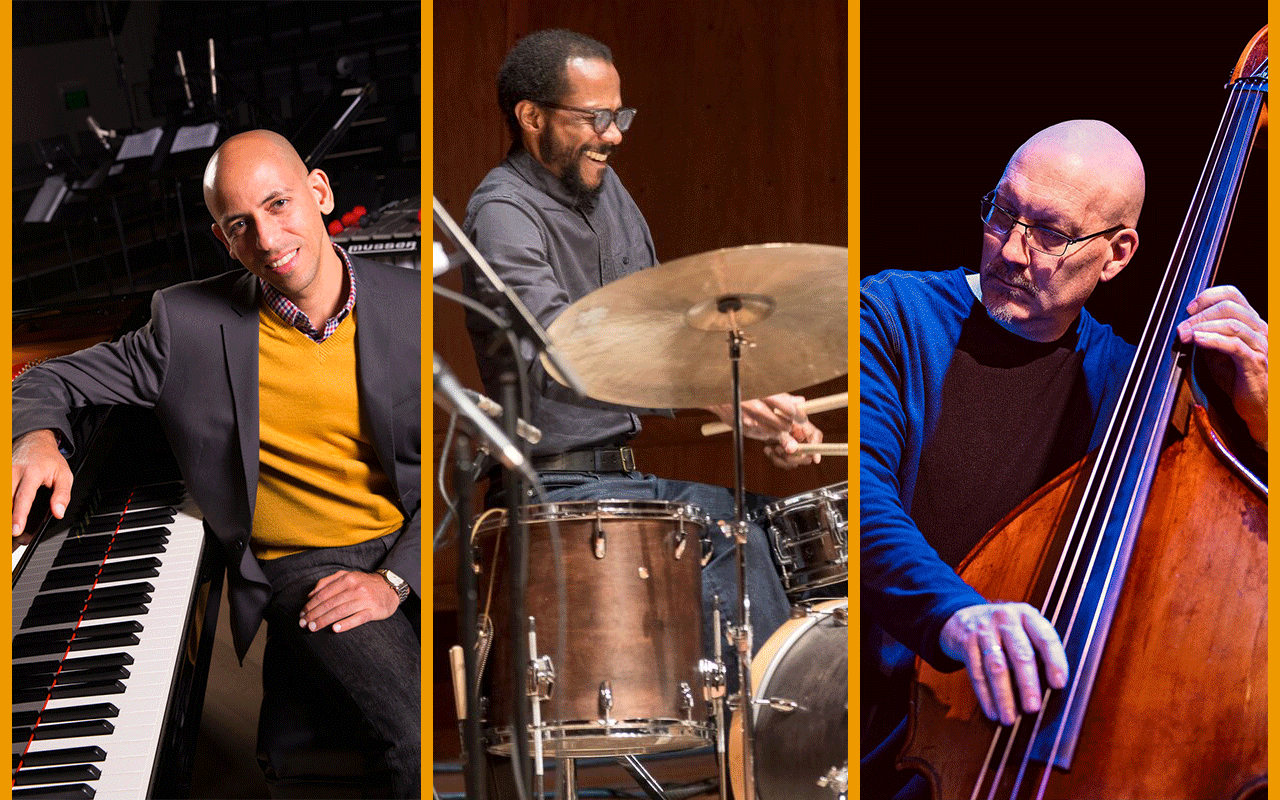
Edward Simon, Brian Blade, and Scott Colley photo courtesy of Sophia Wong
Tuesday, June 7, 7:30pm
Seattle Art Museum, Pletscheeff Auditorium
1300 1st Ave
$10-30
BY MATTHEW ADKINS
There’s something compelling about a combo made up of sidemen, the guys whose job it is to set musical foundations rather than soak up the limelight. It isn’t just the fact that we enjoy seeing the journeymen take center stage. When the rhythm section takes over, and the foundation becomes an end in itself, we’re treated to a whole other side of jazz. That other side of jazz will be on full display when Steel House plays Pletscheeff Auditorium at the Seattle Art Museum on June 7.
Edward Simon, Scott Colley, and Brian Blade, the three men who make up Steel House, have all established themselves as gifted musicians in their own right. Simon, in particular, has experience as a soloist and bandleader. All three, however, are best known for the important work they’ve done backing other musicians. Simon has worked as a pianist with artists such as Bobby Hutcherson and Terence Blanchard. Bassist Scott Colley made a name for himself, playing with luminaries such as Herbie Hancock and Michael Brecker. Brian Blade has an equally impressive resume drumming for, among others, Wayne Shorter.
Their work together, though, isn’t quite like any of the work they’ve done for other artists. Steel House songs (and they seem most aptly described as songs) are melodic and lyrical. Some, like “What If” and “Country” from the band’s eponymous 2017 album, actually have lyrics (in both of those cases sung by the ethereal Genevieve Artadi). But the real root of that lyricism has to do with structure.
Steel House songs are organized around extended riffs—musical phrases—the sort of thing that might normally serve as the underpinnings of other kinds of jazz. Think about the openings to “Take Five” or “Watermelon Man.” Where a Dave Brubeck or a Herbie Hancock might run through those riffs a couple of times before letting soloists pick them apart and deconstruct them, Steel House transitions smoothly from one phrase to the next. Each one is fully formed, but the real charm has to do with the way they are strung together. It’s as though while exploring one groove, the trio finds its way magically into another. Phrases work as sentences. Sentences become paragraphs. Paragraphs link together to create whole musical essays.
That isn’t to say that those traditional jazz elements aren’t present. The close listener is rewarded with brilliant improvisational solos by all three instrumentalists. It’s just that the phrases themselves tend to shine through. Solos don’t dominate over the background but tend to reinforce the phrases themselves.
The result is a unique opportunity to examine the guts of a jazz tune, the way the rhythm section moves a song along from point to point. Beyond the uniqueness of the approach, the results are imminently listenable. Those musical phrases get into your head. They’re hummable. In the end, listening to Steel House is an exercise in learning, or re-learning, jazz itself. But it’s one of the more palatable learning experiences you’ll ever have. Tickets.